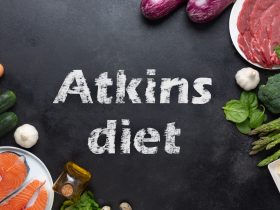The connection between gut health and overall well-being is becoming increasingly evident through scientific research. The gut microbiome, composed of trillions of microorganisms, plays a crucial role in our health, influencing everything from digestion to immune function.
The GAPS diet, or Gut and Psychology Syndrome Diet, aims to enhance gut health by addressing issues like leaky gut syndrome, inflammation, and even certain neurological conditions.
This therapeutic diet eliminates difficult-to-digest foods and incorporates nutrient-dense, probiotic-rich options to improve gut flora and overall health.
What Is the GAPS Diet?
The GAPS diet, developed by Dr. Natasha Campbell-McBride can treat inflammatory bowel disease, leaky gut syndrome, autism, ADHD, depression, anxiety, and autoimmune diseases.
The diet excludes grains, starchy vegetables, and refined carbohydrates, focusing instead on nutrient-dense, easy-to-digest foods. It progresses through six stages, starting with the most restrictive and gradually reintroducing foods.
Benefits of the GAPS Diet
- Prevents Depression
Gut health is closely linked to mental health. While studies on the GAPS diet and depression are lacking, research indicates that improving gut health can alleviate depressive symptoms. A 2017 review found that probiotics might reduce depression.
Another study associated a specific probiotic strain with decreased depressive symptoms and better quality of life in IBS patients.
Additionally, the diet’s exclusion of refined grains, which are linked to higher depression risk, and inclusion of fruits and vegetables, associated with lower depression risk, further supports its mental health benefits.
- Improves Blood Sugar Control
The GAPS diet’s exclusion of grains, starchy vegetables, and refined carbohydrates can help manage blood sugar levels. These foods are high in carbohydrates, which quickly convert to sugar in the bloodstream.
Research supports the benefits of low-carb diets in controlling blood sugar. A study showed that a low-carb, high-protein diet improved blood sugar control in type 2 diabetes patients.
Conversely, high intake of refined carbs is linked to an increased risk of diabetes. While specific studies on the GAPS diet and blood sugar are needed, existing evidence supports its potential benefits.
- Boosts Immune Health
A healthy gut microbiome significantly impacts overall health and the immune system. The GAPS diet emphasizes fermented foods and probiotics, which increase beneficial gut bacteria.
These bacteria communicate with immune cells, enhancing the body’s response to disease and infection. By fostering a healthy gut environment, the GAPS diet can strengthen the immune system and improve resilience against illnesses.
- Reduces Inflammation
Chronic inflammation is linked to numerous diseases, including cancer, heart disease, and diabetes. Inflammation also plays a role in digestive disorders like inflammatory bowel disease (IBD) and Crohn’s disease.
The GAPS diet includes anti-inflammatory foods such as antioxidant-rich vegetables, healthy fats, and fish, along with probiotics from fermented foods. Research suggests that probiotics can reduce inflammation.
By decreasing intestinal permeability, the GAPS diet may prevent symptoms of leaky gut syndrome, such as food sensitivities and malabsorption, by addressing the root cause: inflammation.
- Improves Symptoms of Autism
While direct research on the GAPS diet and autism is limited, certain dietary modifications within the diet show promise. Studies have found that eliminating gluten can positively affect autism symptoms. For example, a 2016 study found that a gluten-free diet improved behaviors and gastrointestinal symptoms in children with autism.
Similarly, a 2017 study indicated that a gluten-free, casein-free diet reduced autism symptoms. Although more research is needed, these findings suggest dietary changes could benefit those with autism.
The GAPS Diet Food List: A Comprehensive Guide for Your Grocery Shopping
The GAPS diet, designed to enhance gut health by eliminating refined carbohydrates, starchy vegetables, and grains, focuses on easily digestible, nutrient-rich foods. Here’s a detailed list to help you navigate your next grocery trip:
Vegetables
- Non-Starchy: Artichoke, Arugula, Asparagus, Avocados, Beets, Bell Peppers, Bok Choy, Broccoli, Broccoli Rabe, Brussels Sprouts, Cabbage, Carrots, Celery, Collards, Cucumbers, Eggplant, Fennel, Garlic, Green Beans, Jerusalem Artichoke, Kale, Mushrooms, Olives, Onions, Parsnip, Pumpkin, Radish, Romaine Lettuce, Seaweed, Spinach, Squash (summer and winter), Tomatoes, Turnips, Watercress.
Fish (Wild-Caught Only, No Farm-Raised)
- Varieties: Anchovies, Bass, Cod, Grouper, Haddock, Halibut, Herring, Mackerel, Mahi Mahi, Red Snapper, Salmon, Sardines, Seabass, Trout, Tuna, Walleye.
Nuts and Legumes
- Types: Almonds (sprouted or as raw nut butter), Brazil Nuts, Coconut, Hazelnuts, Lima Beans (soaked), Macadamia, Navy Beans (soaked), Pecans, Pine Nuts, Walnuts, Nut Butters, Nut Flours (limited to 1/4 cup a day).
Fats and Oils (Organic & Unrefined)
- Selections: Avocado Oil, Almond Oil, Butter (pastured), Coconut Oil, Flaxseed Oil, Ghee, Hempseed Oil, Macadamia Oil, Olive Oil, Sesame Oil, Palm Oil (sustainable), Walnut Oil.
Dairy (Raw, Aged, and Grass-Fed)
- Options: Goat Cheese (aged 60+ days), Kefir (cultured goat milk, fermented 24+ hours), Raw Sheep Cheese (aged 60+ days), Sheep Yogurt (fermented 24+ hours), Raw Cows Cheese (aged 60+ days), Raw Cows Amasai, Kefir, and Yogurt (fermented 24+ hours).
Meat (Organic, Grass-Fed)
- Choices: Beef, Bison, Bone Broth, Chicken, Duck, Eggs (free-range), Lamb, Turkey, Quail, and other Wild Game, Venison and other Wild Game.
Fruits (In Moderation)
- Variety: Apple, Apricot, Banana, Berries, Blueberries, Cantaloupe, Cherries, Coconuts, Figs, Grapefruit, Grapes, Kiwi, Lemon, Lime, Mango, Nectarine, Orange, Papaya, Peaches, Pears, Pineapple, Plums, Pomegranate, Raspberries, Rhubarb, Strawberries, Watermelon (no seeds).
Spices & Herbs
- Selection: Basil, Black Pepper, Cilantro, Coriander Seeds, Cinnamon, Cumin, Dill, Fennel, Garlic, Ginger, Mint, Parsley, Peppermint, Rosemary, Sage, Sea Salt, Tarragon, Thyme, Turmeric.
Condiments
- Options: Apple Cider Vinegar, Coconut Vinegar, Sea Salt.
Flours
- Types: Coconut Flour, Almond Flour.
Beverages
- Choices: Almond Milk, Coconut Kefir, Coconut Milk, Herbal Teas, Raw Vegetable Juices (like celery juice), Sparkling Water, Spring Water (or filtered), Wine (in moderation).
Sweeteners (In Moderation)
- Selections: Raw Honey, Dates (made into paste).
Supplements
- Options: Digestive Enzymes, Fish Oil or Fermented Cod Liver Oil, L-Glutamine Powder.
The GAPS diet emphasizes nutrient-rich, easily digestible foods while eliminating potential irritants to support gut health and overall well-being.
Use this food list as a guide to make informed choices that align with the GAPS dietary principles.
Starting the GAPS Diet
The GAPS intro diet is structured into six progressive stages, each introducing specific foods to ensure they are well-tolerated. This careful reintroduction process helps identify any adverse reactions, supporting a gradual and sustainable improvement in gut health.
Stage 1: Initial Phase
In the first stage, the diet includes easily digestible, nutrient-dense foods:
- Meats: Beef, chicken, lamb, turkey, duck, quail (boiled or simmered in broth)
- Vegetables: Bok choy, broccoli (no stalks), carrots, cauliflower (no stalks), collard greens, eggplant (peeled), garlic, kale, onions, pumpkin (fresh), summer squash, spinach, turnips, winter squash, zucchini (all cooked)
- Fish: Boiled or simmered in broth
- Fermented Vegetable Juice: 1 teaspoon with meals
- Others: Ginger root, raw honey, animal fat (chicken), or tallow
- Beverages: Tea (chamomile, ginger, or mint)
- Yogurt: Homemade, fermented 24+ hours (starting slow with 1 tablespoon daily)
- Seasoning: Sea salt
Stage 2: Adding Variety
Building on Stage 1, Stage 2 introduces:
- Egg Yolks: Raw (pastured/organic)
- Ghee: Gradually introduced
- Coconut Oil: Introduced gradually due to its strong anti-microbial properties
- Avocado
Stage 3: Expanding Choices
Stage 3 incorporates additional foods:
- Nut Butter: Raw and sprouted
- Flours: Almond flour and coconut flour (maximum 1/4 cup daily)
- Fermented Vegetables: Sauerkraut
- Vegetables: Asparagus, cabbage, celery, fresh herbs (all cooked)
Stage 4: Enhanced Nutrition
Further expanding the diet, Stage 4 adds:
- Juices: Carrot juice
- Meats: Grilled and roasted meats
- Herbs: Dried
- Oils: Extra virgin olive oil
Stage 5: Incorporating Fruits
In Stage 5, more fruits and vegetables are included:
- Fruits: Homemade applesauce, pear sauce, mangoes, tomatoes, cucumbers (peeled)
- Vegetable Juices
- Herbs: Dried
Stage 6: Final Stage
The final stage introduces a wider variety of raw fruits:
- Fruits: Apple, berries, banana, cherries, coconut, coconut milk, dates, kiwi, peaches, pears, pineapple, raspberries
Precautions
While the GAPS diet can offer numerous benefits, it is not suitable for everyone. For instance, vegetarians or vegans may struggle to meet their nutrient needs due to the diet’s heavy reliance on animal products.
The GAPS diet is also not a substitute for traditional treatments for conditions like digestive disorders, autism, or depression. Always consult a healthcare practitioner for personalized advice and treatment plans.
Introducing new foods slowly and monitoring for adverse reactions is crucial, especially in the initial stages. If certain foods are not well-tolerated, delay reintroducing them to avoid negative side effects.
Complementing the GAPS diet with a healthy lifestyle, including regular physical activity, adequate sleep, and stress management, is essential for optimal results.
Wrap-Up
The GAPS diet aims to reduce inflammation, treat neurological conditions, and heal the gut by enhancing digestive health. By eliminating grains, starchy vegetables, and refined carbohydrates and focusing on nutrient-dense foods, the diet supports gut health and overall well-being.
Although research on the GAPS diet itself is limited, improving gut health through diet has been linked to numerous potential benefits, such as better blood sugar control, reduced risk of depression, decreased autism symptoms, enhanced immune health, and reduced inflammation.















Find Us on Socials